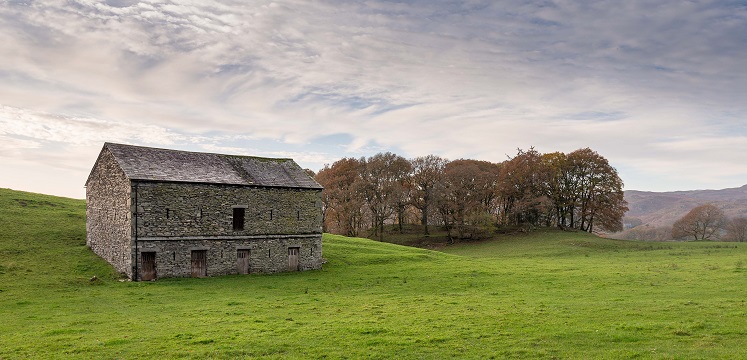
14 December 2021
Rose Lord, our Built Environment Adviser explains why sometimes we need to look back in time to help us deliver positive outcomes for the climate emergency. As we all focus on ways to reduce our carbon footprint and live more sustainably, the historic environment is probably not at the forefront of everyone’s minds; but perhaps it has more relevance than you might think.
Traditional barns can be found in every valley and almost every settlement in the Lake District, there are thousands of them across the whole of the National Park, so why is it so important to save them?
These traditional buildings can offer us some useful pointers about sustainable development, which were being practised centuries ago;
All buildings have a carbon footprint which includes embodied carbon; the emissions from the extraction, manufacture, transportation and installation of building materials, in addition to operational carbon; the emissions generated whilst the building is in use.
Keeping barns in use for their original purpose is the ideal option for securing their future, but as farming practices have changed sometimes this is often no longer feasible. Many field barns can still serve their original purpose as animal shelters or hay storage. New uses which cause the least impact on the building and wider landscape may also be possible, such as camping barns or ‘stone tents.’
So it makes perfect sense to maintain, use and adapt existing buildings rather than demolish them and build new structures.
Traditional barns are a key part of the historic environment of the Lake District. They are recognisable features which demonstrate the skill and techniques of local builders in the 17th, 18th and 19th centuries. There are regional variations in terms of materials, overall design and details which set apart barns in different areas, so barns found in Eskdale are slightly different from those in Martindale for example. Every barn across the Lake District is important as no two barns are the same.
Traditional agricultural buildings and structures, including barns are a key attribute of Outstanding Universal Value for which the Lake District is inscribed as a World Heritage Site. These humble buildings illustrate the farming practices in each valley and the different production priorities over time. The intactness and integrity of the different groups of buildings in each valley is very high, so to lose a number of barns in an area will impact upon the condition of the World Heritage Site.
Almost all traditional barns provide habitats for different species of wildlife, including bats, birds and owls. Where would barn owls live if we had no barns?!
A regular pipeline of repair and maintenance projects on traditional barns will help to ensure we have a good number of skilled and experienced builders available to help conserve all kinds of historic buildings across the National Park.

Find out more about the Lake District National Park’s Historic Barns Restoration Project